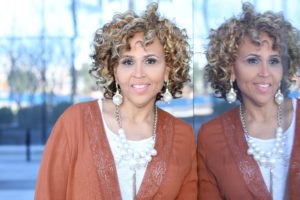At the National Storytelling Network, our mission is to advance all forms of storytelling within the community through promotion, advocacy, and education.
STORY NOW! Interview Series
The theme of our 2019 annual conference was Story Now!
Now! From the boardroom to the classroom, and the page to the stage, personal stories and folktales are catalysts for change in every aspect of our lives.
Now! We are witnessing the power of stories to tear down the walls that divide us, build bridges between people and cultures, and connect us, human-to-human. In this interview series, we’ll talk to storytellers who exemplify this Story Now! movement.
Each month we’ll sit down with an NSN member or member organization, from around the globe, and go behind the scenes to explore how they are personally harnessing the power of storytelling to tear down walls, to be a catalyst for change and connect us human-to-human. Through one-on-one, in-depth conversations, we’ll discover the type of storytelling they do, how they do it, who their audience is, and, most important, they’ll give examples of the real world, tangible results they get.
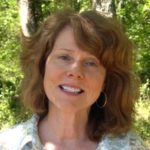 Kathy Greenamyre is NSN’s Community Relations Manager. She will be conducting interviews and contributing content each month for our Story Now! Interview Series. Kathy is the owner of a video production company. She’s interviewed hundreds of people over the past 12+ years. Her passion is to discover the world (and maybe even learn how to fix it) by listening to, recording, and spreading personal stories.
Kathy Greenamyre is NSN’s Community Relations Manager. She will be conducting interviews and contributing content each month for our Story Now! Interview Series. Kathy is the owner of a video production company. She’s interviewed hundreds of people over the past 12+ years. Her passion is to discover the world (and maybe even learn how to fix it) by listening to, recording, and spreading personal stories.
Cheryl D. Cofield, JD, CPCC, ACC, CDWF, CDTLF – Atlanta, Georgia
Director, Inclusion & Engagement
Curator, Storytelling Integration & Transformative Narratives
Dean of Faculty, Inclusive Leaders Academy
Georgia Institute of Technology
237 Uncle Heine Way, Suite 232
Atlanta, Georgia 30332
Kathy Greenamyre: How are you doing during these uncertain times, Cheryl?
Cheryl Cofield: Most days I pretend to be okay, when in fact, I’m grieving and mourning the impact of both Covid-19, and the painful reality of racism in America. As always, I suit up, show up, and perform, but it’s becoming increasingly difficult to reconcile this charade with the truth of my current woundedness.
What feels hard at times is reckoning with how some Americans just “discovered” racism in recent news stories, while others have for decades lived in its insidious grip almost every minute of every day. It’s sometimes difficult to be with my quiet disappointment about the obliviousness of what has long seemed to be in plain sight. To be honest, I’m exhausted these days from being tapped so often to assist people as a diversity consultant, story coach, or race dialogue facilitator.
KG: I’m sorry to hear it’s been so difficult for you recently and hope the world doesn’t squander this historical moment to get its act together.
A little later in this interview you talk about the challenges of your upbringing in Cleveland, OH, and how it shaped you to go on and do the work you do today.
You started telling your personal story with this, “I am a highly sensitive introvert with ADD, happiest alone, all by myself. I grew up in the urban streets of Cleveland where kids drank beer on the church steps; dropped out of school, and died in the streets with needles in their arms.”
It’s fascinating that you started your career as a Corporate Attorney. Lots of twists and turns in your story!
In the meantime, before we get to all of that, your career sounds quite fascinating. Exactly what is it that you do in the world?
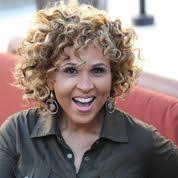 CC: (Laughing) It’s interesting …. The question of “what I do” is far simpler than the answer. I am very blessed to live in a way that “what I do” is so aligned with who I am and why I exist. My life purpose statement is, “I am a Wounded Healer who helps heal the wounded by reminding us all that we are not broken,” and I’ve been fortunate enough to live within this purpose while navigating my career and various vocations.
CC: (Laughing) It’s interesting …. The question of “what I do” is far simpler than the answer. I am very blessed to live in a way that “what I do” is so aligned with who I am and why I exist. My life purpose statement is, “I am a Wounded Healer who helps heal the wounded by reminding us all that we are not broken,” and I’ve been fortunate enough to live within this purpose while navigating my career and various vocations.
I began my career as a civil rights attorney and served as employment counsel for a myriad of local and national governmental entities. I later entered Corporate America, managing complex human capital portfolios for Fortune 50 corporations until 2005, when I was tapped by Walmart’s Global Home Office to design and implement a diversity training strategy for more than 2 million employees. After 5 years of professional growth there, I entered the Academy (at Georgia Tech) in search of balance and fulfillment for both my family and myself. I took an enormous pay cut, said goodbye to live-in nannies, and returned home to Atlanta to find my sweet spot in Higher Education Administration.
I am currently the director of culture, inclusion and engagement at The Georgia Institute of Technology where I serve as the curator of storytelling integration and transformative narratives, chief dialogue officer, and dean of faculty for our Inclusive Leaders’ Academy. My colleague, Pearl Alexander, and I navigate this fascinating portfolio together and are often referred to as the dynamic duo. (laughs).
KG: Tell me more about your work around storytelling.
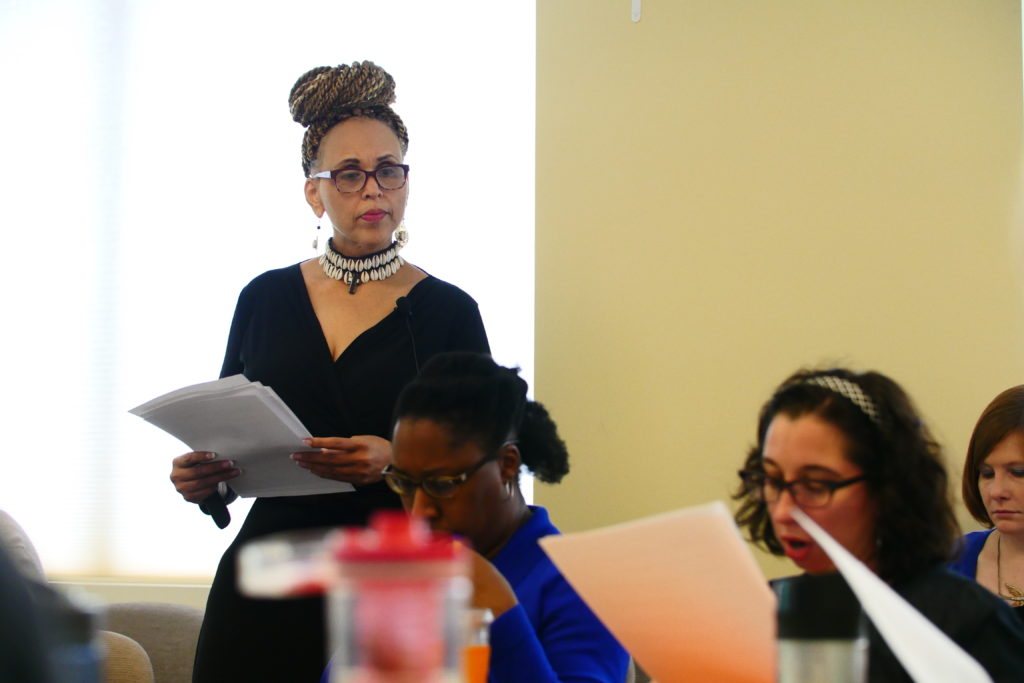 CC: Absolutely. The storytelling integration and transformative narratives initiative at Tech is designed to integrate storytelling into the campus fabric and fiber. The work began in 2012 when we created storytelling troupes and began hosting “storytelling salons” during our signature annual Diversity Roundtable events. From 2012-2015 we partnered with nationally touring storytellers to produce large scale live storytelling events where hundreds of participants listened to diversity-related stories and engaged in meaningful intermittent “talk-backs.”
CC: Absolutely. The storytelling integration and transformative narratives initiative at Tech is designed to integrate storytelling into the campus fabric and fiber. The work began in 2012 when we created storytelling troupes and began hosting “storytelling salons” during our signature annual Diversity Roundtable events. From 2012-2015 we partnered with nationally touring storytellers to produce large scale live storytelling events where hundreds of participants listened to diversity-related stories and engaged in meaningful intermittent “talk-backs.”
In 2016 we began examining our geo-spatial diversity and noticed the walls of most campus buildings had been, for decades, adorned almost exclusively with formal paintings of older white men. We decided to infuse more inclusive imagery on campus and commissioned a professional photographer and host of local artists and calligraphers to create a collection of portraits to highlight the rich tapestry of our campus diversity.
The exhibit is composed of 24 museum quality portraits that are artistically embellished with powerful handwritten personal narratives/stories. The portraits are custom framed in rich cherry wood frames and travel widely throughout our 142-acre campus, occupying a transmedia presence in both physical and virtual spaces.
The curated collection serves as a resource for initiating conversations about diversity and inclusion and sparking inquiry about individuality, inclusion and belonging. It is intended to deepen our understanding of, and ability to see, one another, connect us through our common humanity, generate social awareness, engender empathy, foster belonging among the campus community, create greater cultural competence and understanding, and make the campus a more human dwelling place. We entitled the collection “Transformative Narratives.”
In 2017, a strategic planning group provided executive funding for the expansion of the initiative and we began creating our web-based repository of curated personal narratives resulting in a digital story library which now houses over 100 personal stories designed to empower the Tech community to courageously engage with issues of diversity and inclusion.
KG: What kinds of stories are collected and how do you go about gathering them?
CC: We facilitate storytelling workshops where we create safe and non-judgmental spaces to aid people in excavating what we call “Diversity Stories” or healing stories. I consider myself a “story midwife,” a term coined by my healing story mentor, Dr. Lani Peterson, and look to birth bold, brave stories for this collection.
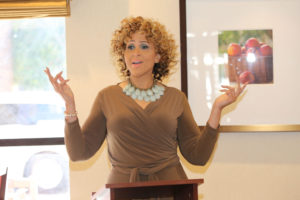 We methodically guide people in thinking back on times they may have felt excluded, mistreated, or misunderstood because of an identity marker. Times when they may have noticed themselves prejudging and/or mistreating a person or group, including times when they witnessed others being treated badly, and it saddened them, but they remained silent and now wish they had taken a stand, etc.
We methodically guide people in thinking back on times they may have felt excluded, mistreated, or misunderstood because of an identity marker. Times when they may have noticed themselves prejudging and/or mistreating a person or group, including times when they witnessed others being treated badly, and it saddened them, but they remained silent and now wish they had taken a stand, etc.
Alternatively, we guide them in mining for stories about hidden identities, about where their struggles have led them, about what they are willing to fight for, about stereotypes they’d like to dispel, and about pivotal life experience that help them see the world differently…
Participants exchange personal stories within an intimate circle of story listeners and receive real time one-on-one coaching from story coaches to excavate details, dig deeper, and refine their stories. Participants then have additional opportunities to attend story writing labs where story coaches are available to assist them with refining, polishing, and completing their stories.
From there, stories are selected for possible inclusion in the digital story library. If selected, the storyteller, as well as their personal story, is afforded additional coaching on how to make the story more powerful, and on how to deliver the story most effectively. The story is then recorded in our professional studio. We thereafter work with professional musicians to develop music scores and sound designs for the pieces. We also occasionally create animations to accompany or embellish audio stories. This year, we are looking to also add video backdrops and begin exploring intersections with virtual reality platforms for the stories.
KG: What kinds of stories have been harvested from this process?
CC: Oh my gosh! The collection is so rich I don’t even know where to begin. Let me see. We have fascinating stories that provoke, inspire and educate in so many ways. Stories about mental health, police aggression, depression, racial violence, white privilege, resilience, rape culture, marital infidelity, internalized oppression, introversion, parental-based racism, identity dichotomies, allyship, childhood poverty, forced silence, domestic violence, health care disparities, hate crimes, Alzheimer’s care, veteran oppression, the cost of silence, suicide ideation, child molestation, the stigma of teen pregnancy, white fear, white fragility, child abuse, white silence, savior complex, grieving parental loss, and so on.
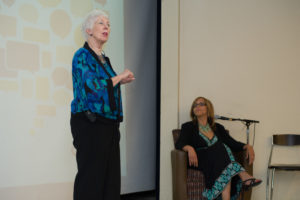 KG: Great, I think I understand the Transformative Narrative process now. You use another term though. What is meant by storytelling integration?
KG: Great, I think I understand the Transformative Narrative process now. You use another term though. What is meant by storytelling integration?
CC: Sure. Yeah. That means that while the traveling exhibit and digital story library are the inaugural efforts, our goal is to actually integrate storytelling into each and every aspect of the campus experience.
KG: Have you begun doing this yet or is it a future aspiration?
CC: Both. Yes, we have already begun, and we still have miles to go before we sleep on this. Thus far, we have infused storytelling into the curricula of both our Inclusive Leaders Academy and Women’s Leadership Program and begun partnering with faculty to infuse elements of the Transformative Narratives collection into the curricula for academic classes.
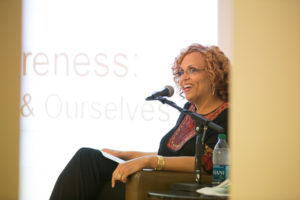 As examples, faculty in our School of Literature, Media and Communication and School of Music have created fascinating projects and academic collaborations. Students in a music technology class added music and sound design elements to audio narratives using instruments, audio samples/loops, live recording and effects; students in our Creative Career Origination Lab (CoLab) created visual anchors and other branding collateral for our initiative; and students in a video production class created videos of live storytelling events; and, finally, students from freshman English and advanced Narrative Theory classes have used stories from the digital story library as anchors for learning.
As examples, faculty in our School of Literature, Media and Communication and School of Music have created fascinating projects and academic collaborations. Students in a music technology class added music and sound design elements to audio narratives using instruments, audio samples/loops, live recording and effects; students in our Creative Career Origination Lab (CoLab) created visual anchors and other branding collateral for our initiative; and students in a video production class created videos of live storytelling events; and, finally, students from freshman English and advanced Narrative Theory classes have used stories from the digital story library as anchors for learning.
In addition, in 2018, we began integrating storytelling into an annual gala event coined as our “Annual Storytelling Crawl”, an immersive, week-long, storytelling series which includes story concerts, story slams, story coaching panels, story salons, evening open-mic story jams, as well as stories around campfires.
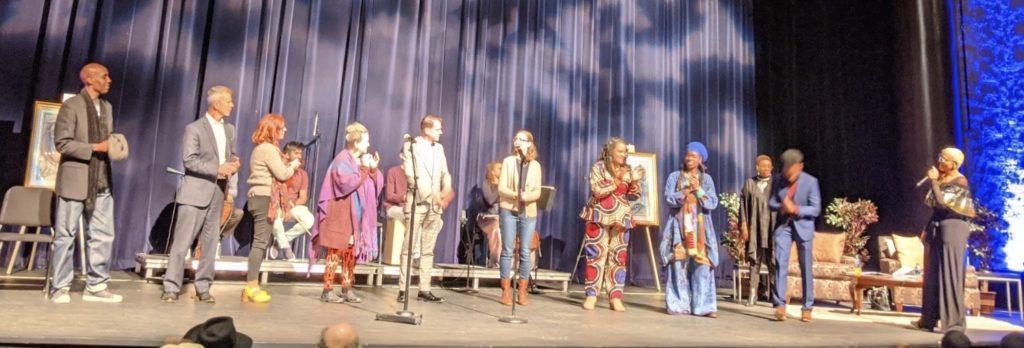
KG: Besides the work you do at Georgia Tech, you have a couple of other ventures in the world, right?
CC: Yeah, I do. In addition to my boutique consulting firm, Culture of Civility International which specializes in courage-building, race dialogue, and soft-skills for C-suite executives, I’ll be re-launching Story Masters International,LLC, my storytelling agency focused on social justice, identity, and healing stories, later this fall.
KG: Wow, stories related to social justice and healing seem incredibly important and relevant right now.
CC: You’re so right. These types of stories are difficult and require courage, but they are the stories the world is longing for right now. There is tremendous healing in both the telling and hearing of these particular types of stories.
KG: What services will your story consultancy offer?
CC: We’ll offer 4 primary services.
- First, we’ll aid clients in unearthing, crafting and recording salient critical life stories.
- Second, we’ll create digital story libraries for organizations which will include story development and coaching, professional recording, the overlay of artistic enhancements such as music scores, sound design, animations, and digital storage.
- Third, we’ll partner with organizations to design “Narrative Portrait” exhibits where we’ll call for stories, host photo shoots, manage artistic embellishments of digital and print portraits, and museum mount and custom frame each piece.
- Finally, we’ll partner with organizations across the country to choreograph and produce live (and virtual) storytelling concerts, circles, slams and jams.
KG: How did you come to join NSN? Are you affiliated with any other storytelling organizations?
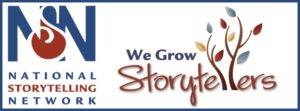
 CC: My joining NSN was directly linked to my interest in the Healing Story Alliance (HSA), one of NSN’s Special Interest Groups (SIGs).
CC: My joining NSN was directly linked to my interest in the Healing Story Alliance (HSA), one of NSN’s Special Interest Groups (SIGs).
In addition to serving briefly on NSN’s Board of Directors in 2019, I have served on the executive committee for the HSA since 2017. At HSA we share experiences and skills to increase our own knowledge of stories and how best to use them to inform, nurture, inspire and heal both organizations and individuals.
HSA is my tribe. I think our shared desire to make social change and to heal others through storytelling binds us.
KG: Tell me more about the work you do around race dialogue and culture coaching.
CC: One of the things I do best is create and hold safe space for vulnerable and sensitive dialogue. At Tech, my colleague Pearl Alexander and I are in the midst of co-facilitating our 2020 Courageous Conversations Series. Most recently, we’ve hosted a series of virtual dialogues (often with audiences of over 200 attendees) including a place to gather, grieve, rest and restore for our Black African Heritage employees, calming, healing, and meditative spaces for our executive women, and a host of campus-wide dialogues focused on implicit bias, white privilege and fragility, allyship, anti-racism, empathy, compassion, and the art and science of race dialogue.
We’re also hosting virtual storytelling circles where the campus gathers to bear witness to moving personal stories of lived experiences of the Black and non-Black campus community.
Finally, we will offer opportunities this summer for confidential, one-on-one, “culture coaching” for select senior leaders who desire to dig into tough conversations, practice equitable and inclusive behavior, become more educated and accountable, move beyond the posture of “doing no harm” to heightened levels of effective allyship, and grounded confidence in their stand against racism in its various forms.
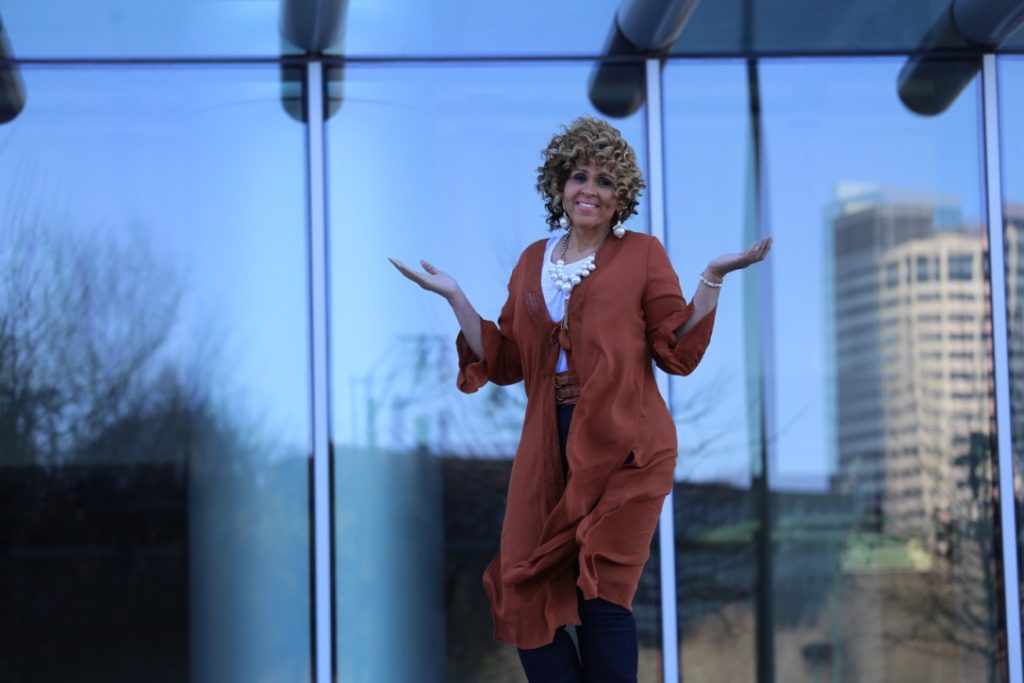 Cheryl’s early years…
Cheryl’s early years…
KG: Tell me about you and your upbringing. Who is Cheryl Cofield?
CC: I am a highly sensitive introvert with ADD, happiest alone, all by myself. I grew up in the urban streets of Cleveland where kids drank beer on the church steps; dropped out of school, and died in the streets with needles in their arms.
I was an academic child, constantly striving for straight A’s. During High School, I was president of the debate team, co-editor of the newspaper, and a constant teacher’s pet.
In 1980, Cleveland schools began desegregating. I was at a predominantly black, Eastside school and that year white kids were being bussed from the Westside for the 1st time. It was my junior year, and at the end of that year, I was voted in as senior class president for the class of 1981. I was elated and began working feverishly that summer preparing to assume the role during my senior year.
To make a long story short, I experienced my first hard blow of racism that summer.
While there were laws that dictated no senior could be bussed, an exception was somehow created which forced me to be bussed my senior year. A white boy named Jim Crow (literally) had received the 2nd highest number of votes for senior class president, and with my removal, he was installed as the senior class president of Cleveland, Ohio’s first desegregated senior class.
My family was poor and uneducated and didn’t know how to fight a system that would devise such a scheme so I entered James Ford Rhodes as one of only three black students in a class of over 200.
I climbed on the yellow school bus the first day of my senior year at the Westside school as the only senior bussed that year. There were busloads of sophomores and juniors being bussed, but I was the only senior (other than a few boys who voluntarily bussed over to play on the otherwise all-white football team).
It was one of the first times I felt helpless and defeated, but there was an eventual silver lining.
As word spread to the black 10th and 11th graders, they proposed a strategy that I should run for Student Council President. It seemed absurd. It was the first-year black kids were being bussed to this otherwise all-white school, and every popular white kid at the school was on the slate, already heavily campaigning as soon as the school year began. They had signs and banners and t-shirts everywhere and were campaigning aggressively.
The 10th and 11th graders were convinced that if I would throw my name in the hat, we could “split the vote” and have an unexpected victory. I was afraid, but I felt obligated as the elder member.
In the end, they were right. I became Student Council President, and was also eventually voted most likely to succeed.
I entered undergrad as a Theater major destined to do social justice through theatre and art. I was supposed to be Ava DeVernay. I really was but my parents considered art trivial and I eventually folded to pressure to become an attorney.
I spoke a lot of truth as a civil rights attorney by day, but cowered to hooded monsters hissing that I wasn’t enough by night.
It was difficult being the first one from my family to ever go to college. I eventually became a perfect mess, masterpiece, and Coltrane’s kind of blues.

Cheryl D. Cofield, JD, CPCC, ACC, CDWF, CDTLF
Director, Inclusion & Engagement
Curator, Storytelling Integration & Transformative Narratives
Dean of Faculty, Inclusive Leaders Academy
Georgia Institute of Technology
237 Uncle Heine Way, Suite 232
Atlanta, Georgia 30332
Email:
Phone: 404-894-8816

Certified Dare to Lead Facilitator™
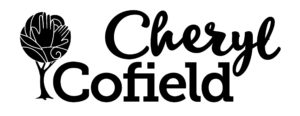
NSN loves publishing items submitted by the storytelling community! If you’re interested in writing something for publication on the NSN website, newsletter, or Storytelling Magazine please contact the NSN office for more information.
Contact the National Storytelling Network
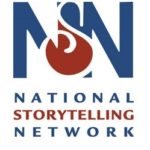 c/o Woodneath Library
c/o Woodneath Library
8900 N.E. Flintlock Road
Kansas City, MO 64157
Telephone: (800) 525-4514
Website: https://storynet.org
Email:
Find us on social media!
Facebook: https://www.facebook.com/National-Storytelling-Network-217381542906/
Twitter: https://twitter.com/NSNStorytellers
Instagram: https://www.instagram.com/nationalstorytellingnetwork
YouTube: https://www.youtube.com/channel/UCBedmDdaRi9N-4Hs-QeYNqw

